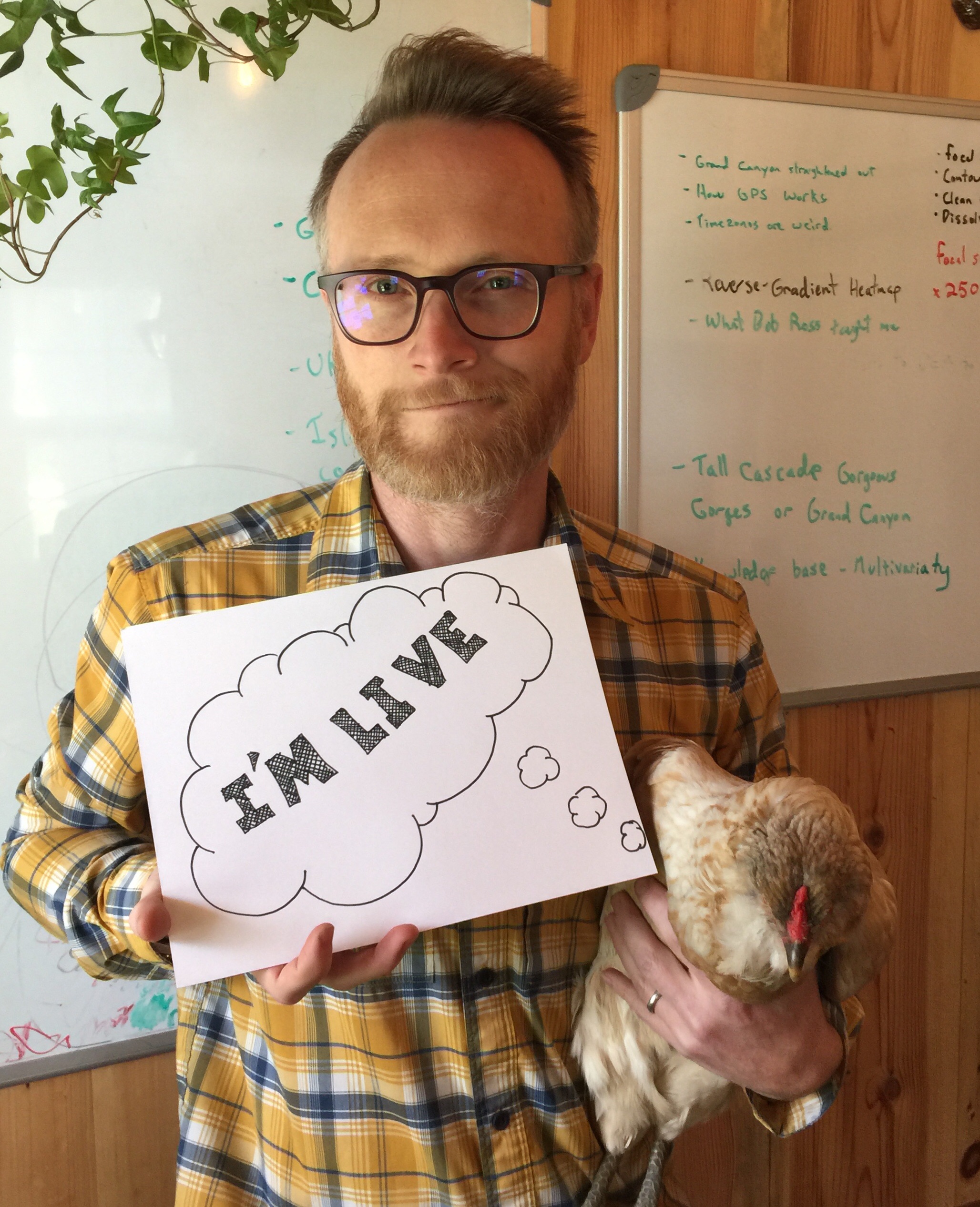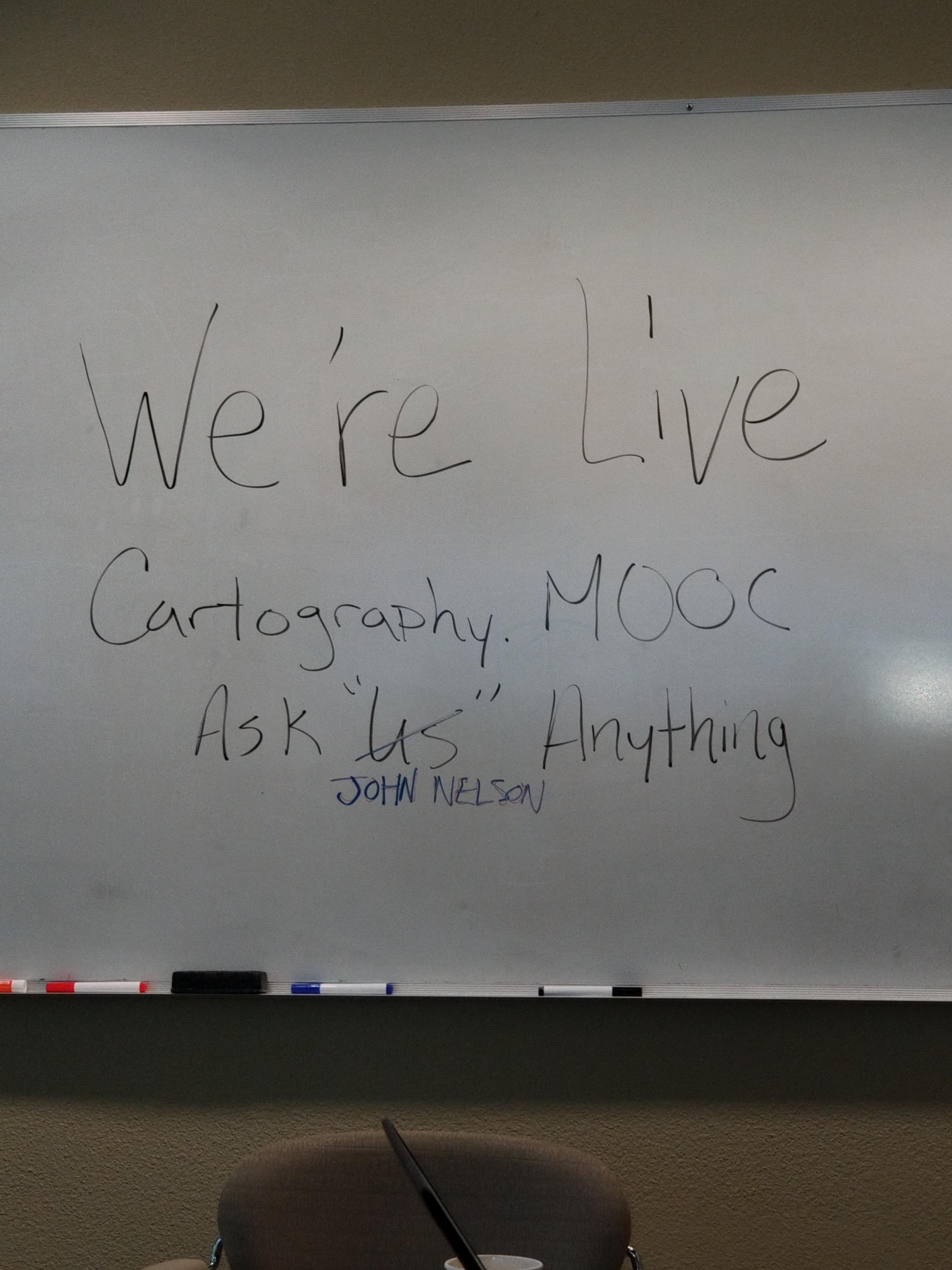- Home
- :
- All Communities
- :
- Services
- :
- Esri Training
- :
- Esri Training Questions
- :
- May 15, 2018: Cartography. MOOC Ask Me Anything (A...
- Subscribe to RSS Feed
- Mark Topic as New
- Mark Topic as Read
- Float this Topic for Current User
- Bookmark
- Subscribe
- Mute
- Printer Friendly Page
May 15, 2018: Cartography. MOOC Ask Me Anything (AMA)
- Mark as New
- Bookmark
- Subscribe
- Mute
- Subscribe to RSS Feed
- Permalink
- Report Inappropriate Content
Live Today! AMA Event on GeoNet
Tuesday, May 15, 9:30 a.m. - 10:30 a.m. (PDT)
Join our Cartography. MOOC guests here on the GeoNet Community for a LIVE AMA (Ask Me Anything) event. The AMA will take place in this discussion thread on Tuesday, May 15, 2018, from 9:30 a.m. - 10:30 a.m. (PDT).
*Click HERE to convert exact time for different countries.
This is an opportunity to ask our guests questions about the Cartography. MOOC course, about cartography in general, great maps, best practices or anything else that comes to mind.
AMA Guests
How does the AMA work? During the AMA, you can post your questions by clicking the "Add Reply" button below and our guests will reply to your questions in comments. You are welcome to post questions ahead of the AMA and they will answer them during the AMA.Please note: You must be logged in to post questions and see responses. See instructions on How to Log into GeoNet for the AMA. AMA Tips and GeoNet Community Guidelines
- When asking questions and comments during the AMA, remember to follow the GeoNet Community Guiding Principles: Be Helpful, Be Human, Be Smart.
- This discussion page will not auto-refresh, so please remember to refresh this page to see new questions, comments and replies.
We are live!
 |  |
9:30 a.m. - And we're live! Go ahead and ask your questions!
9:45 a.m. - If you are just joining us, feel free to ask any question.
10:00 a.m. - We're halfway through, Great questions! Keep them coming!
10:15 a.m. - If you are just joining us, feel free to ask any question.
10:25 a.m. - Five minutes to go! Got any fun questions for our Guests?
10:30 a.m. - And that's a wrap! The live AMA has ended with our wonderful Cartography. MOOC Guests.
Thank you for your questions and participation.
The thread has shifted to a time-stamp view. To view the threads in their entirety, you can select the Actions above the right corner of the discussion thread and select View PDF.
- Mark as New
- Bookmark
- Subscribe
- Mute
- Subscribe to RSS Feed
- Permalink
- Report Inappropriate Content
You bet, George. Almost every map I make involves some sort of transparency. Boundaries as a reference layer is another good example. https://www.esri.com/arcgis-blog/products/arcgis-pro/mapping/boundary-dropshadow-mega-hack/
- Mark as New
- Bookmark
- Subscribe
- Mute
- Subscribe to RSS Feed
- Permalink
- Report Inappropriate Content
In 3D views, it can also be used in others ways. You can use it to indicate features that aren't currently there, like a suite of proposed homes that haven't been built yet. Or features that have uncertainty, like fading out a feature's location of as time progresses (and no new updated location comes in). It can also be used to partially see-through container objects, like making the exterior walls of a building partially transparent. With animation, you can also use transparency as the transmission mode between states --> eg: a classic "before and after" visual effect for a mudslide, or city skyline change.
Transparency does impact color significantly (in 2D and 3D), so be careful with using it when the color "means something" for the features you are symbolizing.
-Nathan.
- Mark as New
- Bookmark
- Subscribe
- Mute
- Subscribe to RSS Feed
- Permalink
- Report Inappropriate Content
Why isn't anyone asking Craig Williams any painfully personal questions??
- Mark as New
- Bookmark
- Subscribe
- Mute
- Subscribe to RSS Feed
- Permalink
- Report Inappropriate Content
Great questions/answers so far. But still nobody has asked about John's chicken(?)
- Mark as New
- Bookmark
- Subscribe
- Mute
- Subscribe to RSS Feed
- Permalink
- Report Inappropriate Content
Why, what are you talking about? Chicken??
- Mark as New
- Bookmark
- Subscribe
- Mute
- Subscribe to RSS Feed
- Permalink
- Report Inappropriate Content
Forgive my naivety, maybe I am dreaming but is there a way to use ArcGIS to link with Google Earth (GE) kmz/kml files in order to present data such as oblique photos and/or data about a particular/specific GE location?
Thanks - mostly for the course! and if you can point me in the correct direction towards an answer... td
- Mark as New
- Bookmark
- Subscribe
- Mute
- Subscribe to RSS Feed
- Permalink
- Report Inappropriate Content
Hi Terry,
You can add KML/KMZ layers into ArcGIS Pro (just like other data types) and see the content in 2D or 3D, then visit the content as needed. There's also a GP tool called "KML to Layer" that will convert the KML elements into attributed features - it will create multiple layers (eg: point, line, polygon, ...) depending upon the contents of the KML.
To go the other way, you can export a layer to KML using the "Layer to KML" GP tool.
There are some limitations with what parts of the KML spec are supported in both directions, so your results will rely somewhat on how the KML has been authored.
-Nathan.
- Mark as New
- Bookmark
- Subscribe
- Mute
- Subscribe to RSS Feed
- Permalink
- Report Inappropriate Content
Thanks for your reply regarding layer to kml exports and and vice versa... I will keep investigating now that I know it is possible. If you know of or could advise any good tutorials, please do so?
Great fun! This MOOC and ArcGIS Pro have given me a new level of intrigue!
- Mark as New
- Bookmark
- Subscribe
- Mute
- Subscribe to RSS Feed
- Permalink
- Report Inappropriate Content
Thank to Esri Team, the course is great!
So far, I have just one question: When do I know the best time to leave ArcMap and use only ArcPro?
I can't afford both licenses.
- Mark as New
- Bookmark
- Subscribe
- Mute
- Subscribe to RSS Feed
- Permalink
- Report Inappropriate Content
I think you get both with the same license. I've found the best way forward is to import an Arc Desktop project you are familiar with into Pro, so the on-ramp is a little smoother.